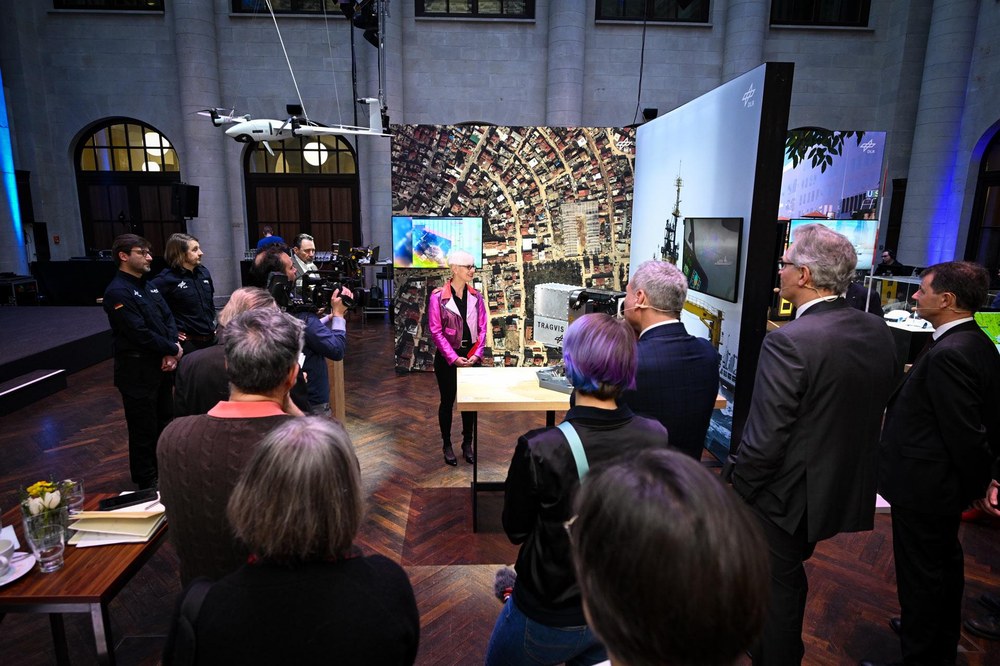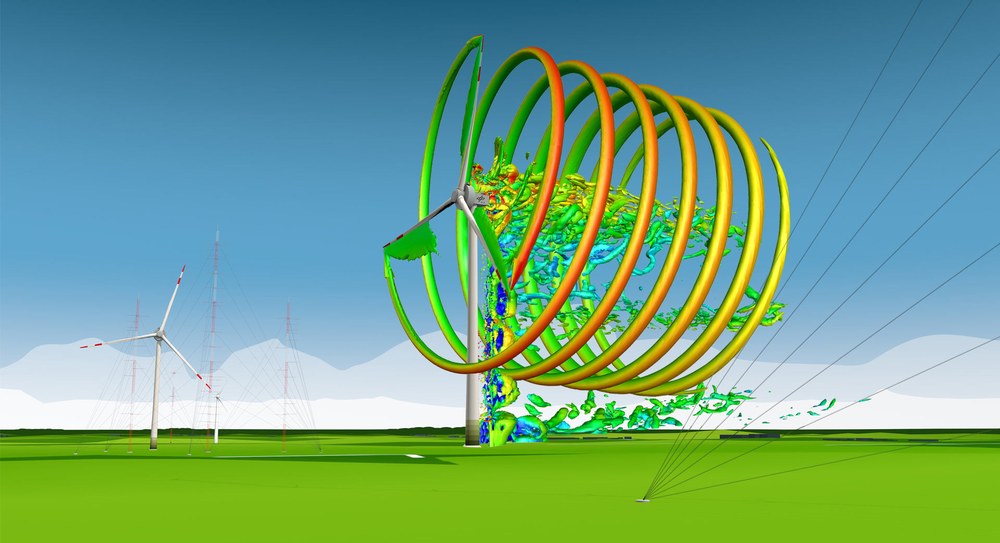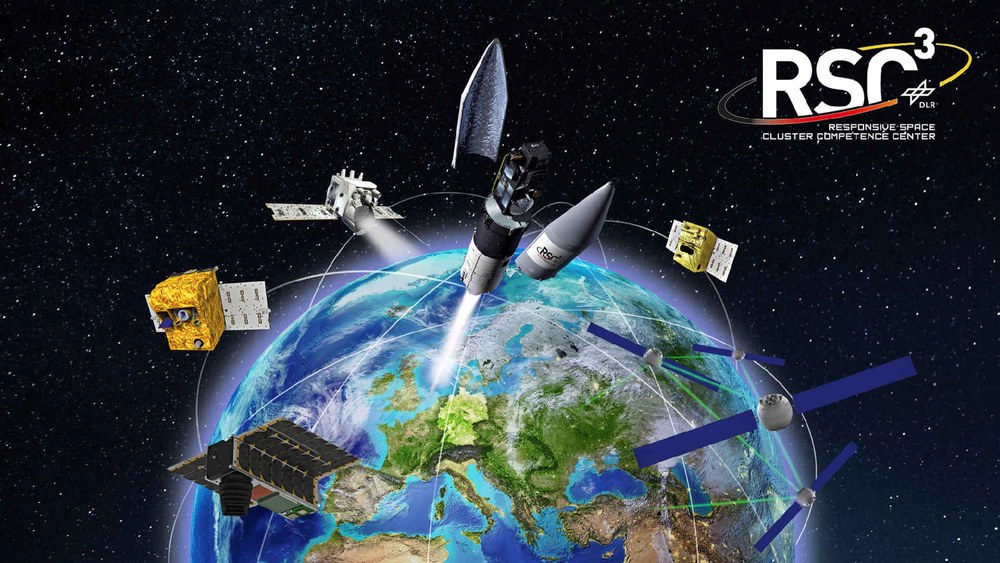New research aircraft for climate-friendly flight, new wind energy research farm and green light for the Startup Factory



- DLR acts as a major research partner in the development of production facilities for sustainable aviation fuels up to industrial scale.
- With extensive participation in international space missions to the Moon, Mars and Jupiter, DLR is advancing the exploration of the Solar System.
- DLR is developing sustainable vehicle and mobility concepts and conducts research into the automated and networked driving of tomorrow.
- The protection of terrestrial and maritime infrastructures is becoming increasingly important for security research.
- Focus: Aeronautics, space, energy, transport, security, innovation and transfer
In 2023, the German Aerospace Center (Deutsches Zentrum für Luft- und Raumfahrt; DLR) will provide significant research support for the development and rapid application of sustainable technologies. The aim is to make the best possible use of innovations in aeronautics, space, energy, transport, and security to transition towards a climate-neutral society. This is intended to strengthen Germany's position as a prime location for green technologies. DLR's cutting-edge research is expanding the boundaries of what is possible – from future sustainable mobility and energy generation to new insights through missions to the Moon, Mars, and Jupiter. In 2023, DLR will increasingly focus on testing new technologies for climate-friendly flight, open a research farm for new wind energy technologies and advance exploration of the Solar System with extensive participation in international space missions. In addition, DLR is increasingly involved in security research and is intensifying the creation of DLR spin-off companies with the Startup Factory.
"As a national research institution for aeronautics, space, energy, transport and security, DLR conducts research on behalf of society. In international cooperation with our partners in government and public authorities as well as industry and science, we are working on solutions for global challenges," emphasises Anke Kaysser-Pyzalla, Chair of the DLR Executive Board. "Last year, DLR personnel achieved outstanding results in successful projects such as MARE on Artemis I. DLR's aeronautics strategy was consistently implemented, particularly through cooperation with industry. New vehicle concepts and the development of our wind energy research farm are further examples of DLR's application- and transfer-oriented research. With its expertise and commitment, the German Space Agency at DLR made the ESA Council Meeting at Ministerial Level a particular success for Germany. The provision and interpretation of satellite data for disaster relief using the airborne camera system MACS is part of DLR's security research.” At the annual press conference on 1 March 2023, DLR presented the breadth of its research and activities with a focus on sustainability. Below you will find the priorities and research efforts for 2023 in aeronautics research, space research, the German Space Agency, energy research, transport research, security research and for innovation and transfer.
Focus on air transport
Sustainable Aviation Fuels (SAF) significantly reduce the climate impact of air transport in terms of both its carbon dioxide footprint and non-carbon-dioxide effects. This year, DLR is again undertaking joint flight tests with Airbus and other industry partners, in which biobased SAFs are being tested, and their emissions analysed. In line with DLR's Aviation Strategy, highly efficient turbofan engines and synthetically produced SAF (PtL, Power-to-Liquids) offer prospects for climate-friendly operation, particularly for medium- to long-haul flights. In the coming years, it will be crucial to develop production plants for sustainable kerosene on an industrial scale, and to test and then transfer them into commercial operation. DLR is acting as a major research partner in this process. There are many technological possibilities for making regional and short-haul aircraft climate-friendly in the future. Hydrogen in particular can play a role here – either as a sustainable fuel for direct combustion or for hybrid electric propulsion systems using fuel cells. In addition, technologies for increasing aerodynamic efficiency and reducing weight through new approaches in lightweight construction are important. In order to investigate the range of these diverse research questions for climate-compatible flight, DLR will increasingly conduct flight tests in cooperation with the air transport industry in 2023. The aim is to accelerate the development of sustainable aviation technologies.
Focus on spaceflight
Following their journey around the Moon with NASA's Artemis I mission, the radiation measurement mannequins Helga and Zohar are back in Germany. The data from the Matroshka AstroRad Radiation Experiment (MARE) project, led by DLR, will provide a three-dimensional image of the radiation exposure of the female body during a lunar flight once they have been evaluated. On 9 March 2023, the two female astronaut phantoms will be presented to the media for the first time after their flight at the DLR Institute of Aerospace Medicine in Cologne. Zohar's radiation protection vest and Helga's suit were shown in advance at today's annual press conference in Berlin. The Franco-German MMX rover is currently being prepared for its journey to the martian moon Phobos at the French space agency (Centre national d'études spatiales; CNES) in Toulouse after DLR's extensive contributions. The launch towards Mars and its moons is planned for September 2024 as part of the Japanese Martian Moons eXploration (MMX) mission. This summer, the rover will be delivered to the Japanese space agency (Japan Aerospace Exploration Agency; JAXA) for integration into the MMX spacecraft. The launch to Jupiter for ESA's largest spacecraft to date, JUICE (JUpiter ICy Moons Explorer), is planned for 13 April 2023. The target is the largest planet in the Solar System and its large icy moons Ganymede, Callisto and Europa, under whose frozen surface oceans of liquid water are believed to exist. DLR's Institute of Planetary Research played a major role in constructing two of the 10 scientific instruments. In the field of satellite navigation, the DLR Space Applications Institute mbH (DLR-GfR) and its partner Telespazio have reaffirmed their joint commitment to the European Galileo programme. Under the umbrella of the German-Italian joint venture spaceopal GmbH, the partners have been successfully and reliably operating the Galileo system together since 2016, including the Galileo control centres in Oberpfaffenhofen and Fucino. This cooperation is to be continued for the coming generations of Galileo satellites, with a view to making the system even more accurate, reliable and secure.
German Space Agency at DLR
The German Space Agency at DLR is managing the German contribution to the ESA science programme (20 percent) for the European Jupiter mission JUICE. It is also funding seven of 10 scientific instruments from the National Space Programme with approximately 100 million euros throughout the mission. JUICE will launch from Kourou on the penultimate Ariane 5 launcher. The 'Heinrich Hertz' communications satellite mission will set off into space On board the last Ariane 5 in the summer of 2023. This is the first German communications satellite in over 20 years and is a test platform for satellite communications technologies. It carries more than 20 experiments from science and industry on board, which focus on communications, antennas, and satellite technology. Heinrich Hertz is financed by the German Space Agency at DLR with funds from the Federal Ministry for Economic Affairs and Climate Action (Bundesministerium für Wirtschaft und Klimaschutz; BMWK) and with the participation of the Federal Ministry of Defence (Bundesministerium der Verteidigung; BMVg). The next steps in the German Space Agency's microlauncher and payload competition are about to begin; in spring, the experiments for the final, fourth flight will be selected and announced. Meanwhile, the infrastructure for the small launch vehicles is being built at the launch sites in Andøya (Norway) and on the Shetland Islands (United Kingdom) by the already award-winning start-ups Isar Aerospace from Munich and Rocket Factory Augsburg.
Germany has held the ESA Chair at Ministerial Level since the ESA Council Meeting at Ministerial Level in 2022; this will last for three years – until the end of 2025. The role is politically oriented and enables influence on the agenda of European space policy. Today, space is essential for the implementation of various policy areas, but at the same time, it is subject to change. The German Space Agency at DLR in Bonn supports the Federal Government in implementing this task. The main topics from a German perspective are green and sustainable spaceflight, strengthening private-sector approaches in ESA and Europe, the reorganisation of the future launcher sector, cooperation between ESA and the EU in spaceflight, and the future of Europe in international exploration. A high-level ESA-EU Space Council (Space Summit) is scheduled to take place in Seville in autumn 2023.
Focus on energy
In the energy sector, DLR researchers are focusing in particular on developing and testing new rotor blades and technologies for wind energy. The Wind Energy Research Farm, which DLR is building together with the Research Alliance for Wind Energy, and will be opened in the summer, also serves this purpose. The production of climate-compatible fuels (SAF) using renewable energies is also at the centre of research efforts. To this end, DLR is researching production technologies to close the gap between development and industrial market ramp-up of these fuels and thus support their market launch. The focus is on air transport and shipping.
Focus on security
After the severe earthquakes in Turkey and Syria, DLR supported the rescue teams on the ground with situational information from satellite data and aerial photographs. A team from DLR's Center for Satellite Based Crisis Information (Zentrum für satellitengestützte Kriseninformation; ZKI) in Oberpfaffenhofen analysed satellite images around the clock in order to provide the rescue teams with digital maps of the current situation on the ground. For this purpose, DLR provided a new type of camera (Modular Aerial Camera System; MACS) for situational awareness on site. During the mission, DLR staff operated a drone to send aerial images from the built-in MACS-nano camera system as a map directly to the United Nations (UN) Incident Command and Management System (ICMS) for the first time. In addition to disaster relief, protecting maritime and terrestrial infrastructure is becoming increasingly important in security research. DLR is strengthening its activities in this area with the further expansion of the DLR Institute for the Protection of Terrestrial Infrastructures in Sankt Augustin and the DLR Institute for the Protection of Maritime Infrastructures in Bremerhaven.
In the field of defence research, space is becoming increasingly important as an operational area. The security and functionality of a modern information society and its defence depend on unhindered access to space-based information and communications paths. In this context, DLR, funded by the Ministry of Defence, is further expanding its research activities in this area with the Responsive Space Cluster Competence Center in Trauen. The responsive deployment and replacement of satellites and strengthening the resilience of space-based systems and services (Responsive Space) are becoming increasingly important – both in Germany and in Europe, and especially in the USA. DLR's site in Trauen, funded by the state of Lower Saxony, is providing significant incentives for developing a national Responsive Space capability (embedded in the EU and NATO) in collaboration with industry and national and international partners.
Innovation and technology transfer – driving forces for tomorrow's society
As a publicly funded institution, DLR receives considerable support from government, industry and society and would like to give even more back. The way to do this is by transferring expertise and technologies from research to industry. To achieve this, the 10,000 personnel at DLR think about possible future applications, for example in innovative products, right from the start. DLR is continuously intensifying its efforts in this area. Spin-offs are an important factor for knowledge and technology transfer from DLR. These are actively promoted and supported. Many years of experience show that 90 percent of DLR spin-offs survive in the market over the long term. In order to become even more successful in this area, DLR is establishing the Startup Factory, a systematic programme to promote and develop its spin-offs.
